Advertisement
Developer:
Size:
Latest Date:
Version:
Platform:

Gamdise only includes the official package of the game, and all links jump to the official platforms such as the App Store and Nintendo. There is no malware, and it is not shared with developers. Please feel free to click!
Advertisement
The Legend of Zelda: Breath of the Wild is a 2017 action-adventure game developed and published by Nintendo for the Nintendo Switch and Wii U consoles. Breath of the Wild is the nineteenth installment of The Legend of Zelda franchise and is set at the end of the Zelda timeline. The player controls Link, who awakens from a hundred-year slumber to defeat Calamity Ganon and restore the kingdom of Hyrule.
Forget everything you know about The Legend of Zelda games. Step into a world of discovery, exploration, and adventure in The Legend of Zelda: Breath of the Wild, a boundary-breaking new game in the acclaimed series. Travel across vast fields, through forests, and to mountain peaks as you discover what has become of the kingdom of Hyrule in this stunning Open-Air Adventure. Now on Nintendo Switch, your journey is freer and more open than ever. Take your system anywhere, and adventure as Link any way you like.
Breath of the Wild is an action-adventure game set in an open world where players are tasked with exploring the kingdom of Hyrule while controlling Link. Breath of the Wild encourages nonlinear gameplay, which is illustrated by the game's lack of defined entrances or exits to areas, scant instruction given to the player, and encouragement to explore freely. Tasks include collecting various items and gear to aid in objectives such as puzzle-solving or side quests.
● Discover Hyrule as never before: by making your own path, choices, and consequences
● Ingenuity is the key to survival: find multiple solutions to tons of dynamic puzzles
● Surprises hide around every corner: scavenge weapons, armor, plants, animals, and more
● Live off the land: find weapons and armor, cook food, and brew elixirs
● Utilize special technology: the in-game Sheikah Slate controls, objects and enemies in fun ways
The Legend of Zelda: Breath of the Wild ©Copyright by Gamdise Do not Reproduce. By JoJo
Similar to the original 1986 Legend of Zelda game, players are free to explore the world with very little guidance. The world is unstructured and designed to encourage exploration and experimentation, and the main story missions can be completed in a non-linear fashion. Zelda games have always been large, but Breath of the Wild feels uniquely grand, a massive open world filled with so much to do that I suspect most players, even those who have completed the main story will miss large swaths of the map. The scale would have been daunting, but the joy of discovery and the satisfaction of finding your way around made it enticing. I wanted to go to places I hadn't yet discovered. I wanted to uncover new secrets and abilities. I wanted more.
As Link, players can run, climb, swim and paraglide, but Link is limited by his endurance. Link can acquire items from the environment, including weapons, food, and other resources. Unlike previous Zelda games, weapons and shields degrade with use. Many items have multiple uses; for example, wooden weapons can be used to light fires, wooden shields can collect incoming enemy arrows, and shields can be used as makeshift skis. Players can obtain food by hunting animals, gathering wild fruits, or collecting parts of defeated enemies. By cooking combinations of food or ingredients, players can craft food and elixirs of immortality to replenish Link's health and stamina or provide temporary status bonuses such as increased strength or resistance to heat or cold.
Link can equip a large variety of different equipment, including weapons, bows and arrows, shields, and armor, to suit the ever-changing Hyrule environment and the tactics used by different enemies. Notably, nearly all weapons, bows, and shields found in the game will break after a certain number of hits. This new durability system often forces Link to use equipment looted from enemies, even weak ones, rather than just wielding the best sword in the game. Equipment that is not used at all, and therefore has not taken any damage, will show a flash in the upper right corner of the icon in the inventory screen. Equipment that is close to being damaged will have a flashing red icon and a short notification will appear whenever it is removed.
The game isn't difficult and is never frustrating. Instead, it offers a real challenge and is completely within your control. Enemies don't necessarily scale based on anything, although the further you get from the starting area, the more enemies you encounter at higher levels. This means you can find a safe place, explore it thoroughly while building your character and skills, and then move on. You can also complete the main quests quickly, as completing some of them will provide you with very powerful magical abilities. These can be turned off to keep the challenge going, or you can always dash into unfamiliar territory and rely on your skills to support you.
As you continue to improve Link's endurance meter and skills, you can reach more and more different locations. But no matter how powerful you become, the world and its resident Mother Nature are always more powerful than you've ever been. Random events like rain and thunderstorms can slow your movement across smooth surfaces, and if you're wearing any metal, dangerous lightning bolts can strike with little warning. In addition, the day/night cycle runs constantly and makes a meaningful difference: nighttime brings monsters that emerge from the ground, the easier discovery of some useful bugs and plants, and other secrets that are best discovered on their own. All this is a constant reminder that you are always at the mercy of the world itself.
Unlike many survival games where every item you use must be made from felled trees and minerals you dig up, Breath of the Wild focuses all of its crafting system on cooking. It's a lightweight, flexible system that offers plenty of opportunities to experiment with different combinations of ingredients to help you survive. Raw foods and quick snacks cooked over the fire will add a small amount of health, but the most interesting and stat-boosting dishes come from throwing ingredients into a pot to make a hearty meal. The art of cooking is a relatively small feature, but like the other components of Breath of the Wilderness, every part of this sandbox is well thought out and almost every action has a meaningful natural outcome.
Besides, the reason why I can immerse myself in this game for several hours is its visual effects and music. The soundscape is gorgeous, grass rustling in the wind, accompanied by soft scenery music. Combined with the sounds of weather, animals, and the general environment, it creates a real sense of existence in this world. The visual effects are really amazing, anyone can see this in many videos. The artistic style and design seen in Breath of the Wild are amazing in many ways. The world around you is lifelike, the grass moves with the wind, and the enemies come to life in a brilliant cartoon way.
One simple fact is The Legend of Zelda: Breath of the Wild is a victory for game design, and it will be remembered as a true milestone for the entire art form. It has something that the series has been missing for years: surprises. It presents a wonderful sandbox full of mystery, with dozens of tempting things hanging in front of you, waiting for you to explore.

The Party Pack for Up to 10 Players
$29.99
Funko POP!
$17.85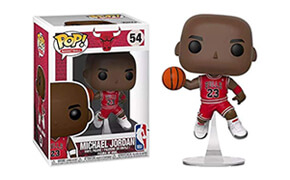
Funko POP!
$12.85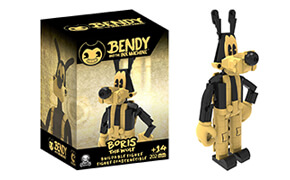
Boris Buildable Figure 202 pieces
$16.98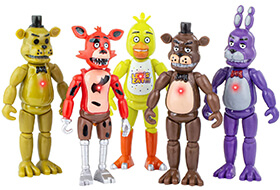
Action Figures Set of 5 PCS
$21.99
Carry Case that Holds 32 Figures
$17.99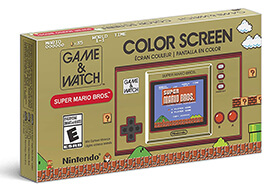
Not Machine Specific
$49.99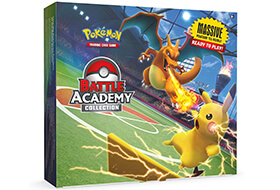
Trading Card Game Battle Academy Bundle
$39.91
Funko Pop!
$12.78
Spray Crew Vinyl Figure
$10.98
The Bounty Collection Series 2 The Child Collectible Toys
$19.99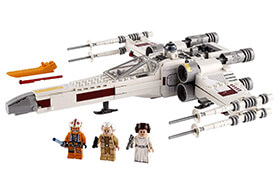
Luke Skywalker’s X-Wing Fighter Awesome Toy Building Kit for Kids
$76.89